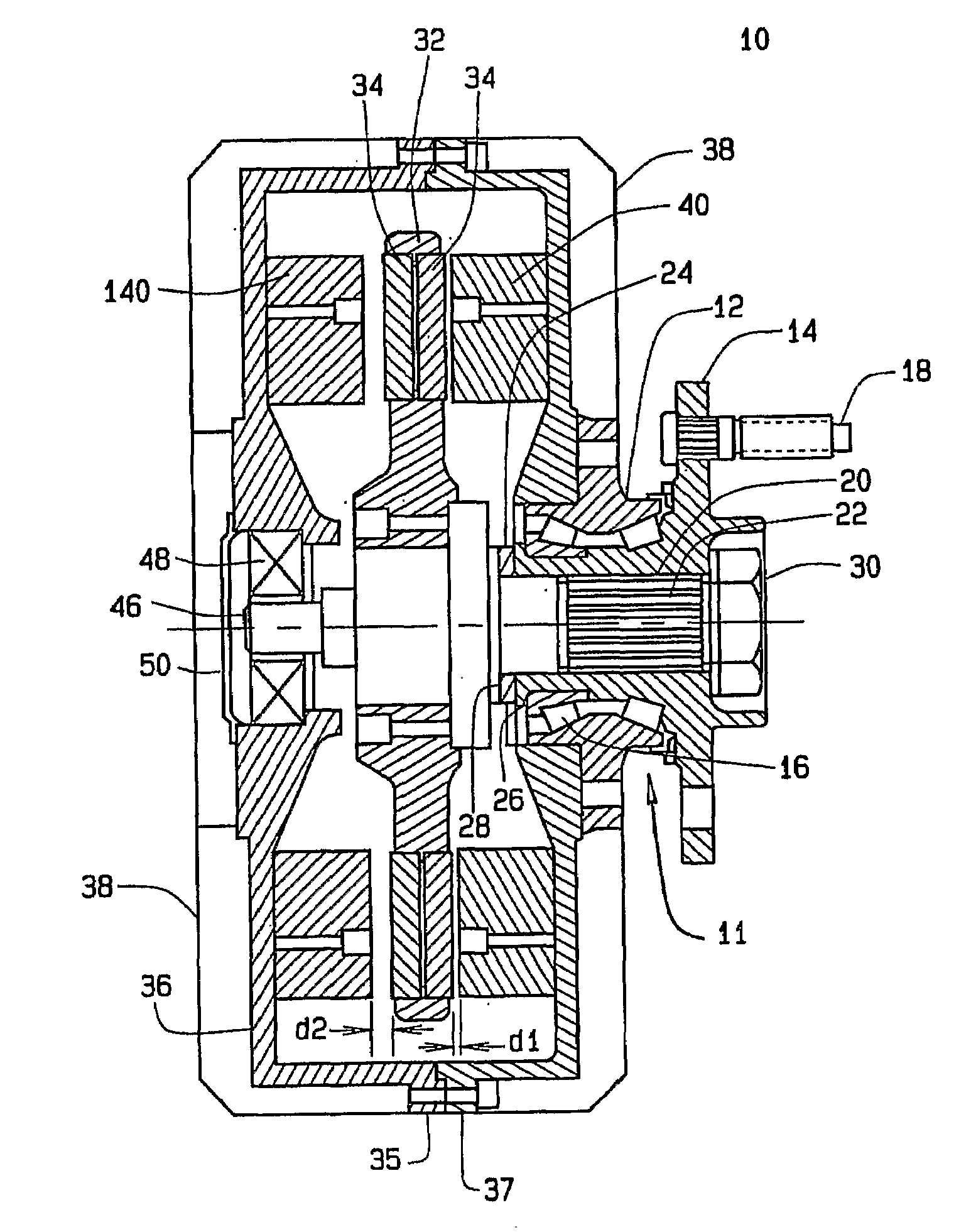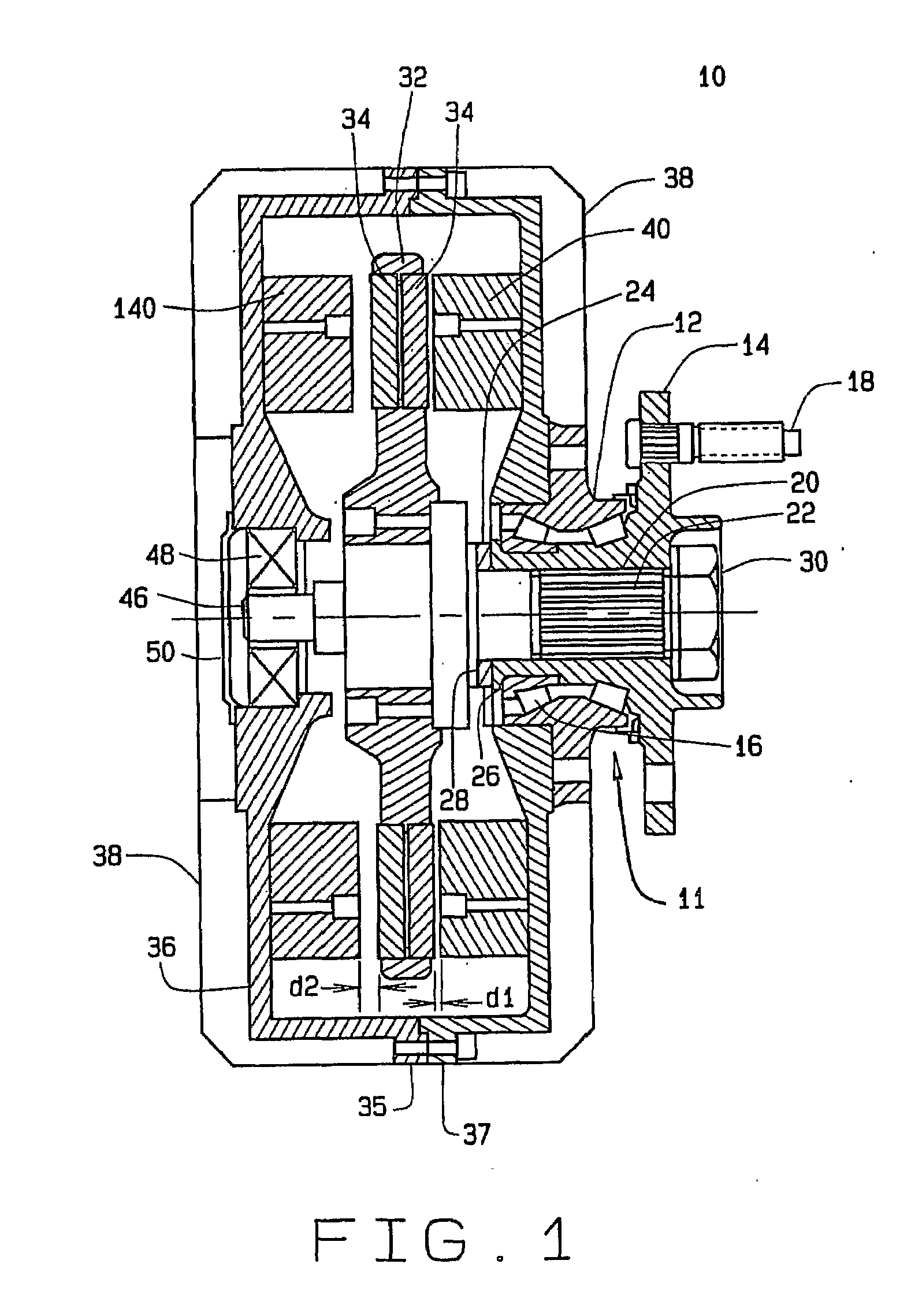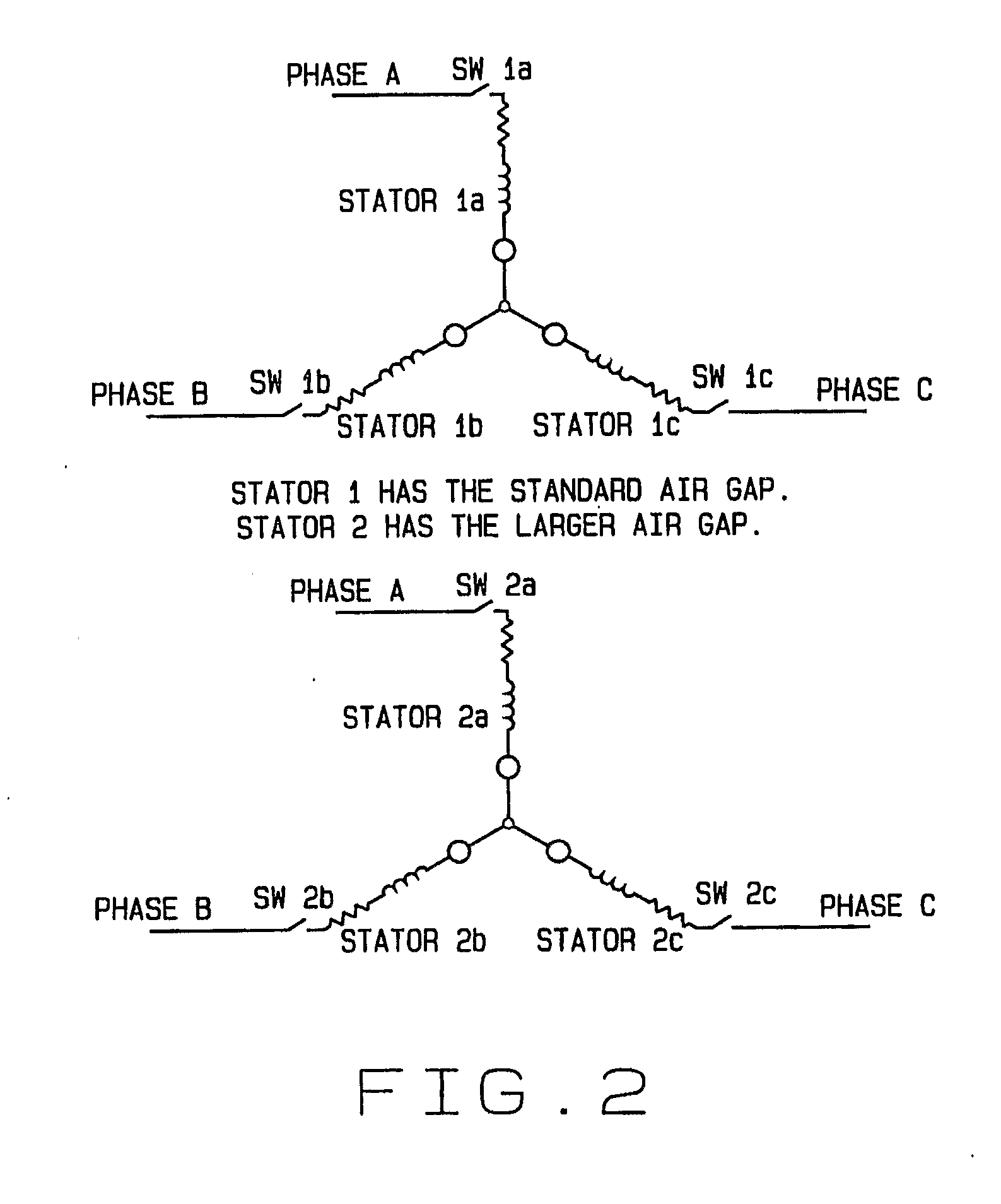Virtual Moving Air Gap For An Axial Flux Permanent Magnet Motor With Dual Stators
a permanent magnet motor and virtual moving air gap technology, applied in the direction of motor/generator/converter stopper, dynamo-electric converter control, ac motor stopper, etc., can solve the problems of limitation of reducing the efficiency of the motor, at the expense of low end torque, etc., to increase the maximum speed of the motor and reduce the back emf
- Summary
- Abstract
- Description
- Claims
- Application Information
AI Technical Summary
Benefits of technology
Problems solved by technology
Method used
Image
Examples
first embodiment
[0027]In the first embodiment, the stators 40 and 140 are wired individually to the drive in a parallel configuration with a set of power electronic switches in series with each stator 40 and 140 as shown in FIG. 2.
[0028]As shown in FIG. 2, the SW1 and SW2 switches are always in opposite states. They can never be turned on at the same time. During the motor operation the SW1 and SW2 switches will be switched at high frequency in a pulse width modulation scheme. Thereby increasing the duty cycle to one will cause an equal decrease in duty cycle to the other.
[0029]The motor will start out with SW1 conducting 100% of the time, and SW2 conducting 0% of the time. This effect is that stator 140, with the larger air gap, is not even in the circuit. The torque and BEMF constants will be that of stator 40 only.
[0030]As the need for a wider speed range increases and the need to for low speed torque decreases, the duty cycle is changed such that SW2 is conducting for a greater percentage of th...
third embodiment
[0044]In the invention, the stators 40 and 140 are wired in series with power electronic switches to turn off and bypass one of the stators, as shown in FIG. 3.
[0045]In this method, each stator is wound with the maximum torque constant and BEMF constant that will yield full motor torque at the continuous rated current, assuming a standard air gap distance. This maximum winding will be done based on a half motor view. For example; if the maximum torque that can be produced by the machine is 700 NM, then each stator will be wound to produce 350 NM at rated current with a standard air gap. This will likely cause the BEMF constant to be high enough that desired full speed could not be obtained due to the limited bus voltage.
[0046]However, in this embodiment, one stator 40 is positioned with a standard air gap. The other stator 140 is positioned at an extended air gap. The BEMF constant of the stator 140 with the extended air gap is reduced by some percentage based on the distance of the...
PUM
 Login to View More
Login to View More Abstract
Description
Claims
Application Information
 Login to View More
Login to View More - R&D
- Intellectual Property
- Life Sciences
- Materials
- Tech Scout
- Unparalleled Data Quality
- Higher Quality Content
- 60% Fewer Hallucinations
Browse by: Latest US Patents, China's latest patents, Technical Efficacy Thesaurus, Application Domain, Technology Topic, Popular Technical Reports.
© 2025 PatSnap. All rights reserved.Legal|Privacy policy|Modern Slavery Act Transparency Statement|Sitemap|About US| Contact US: help@patsnap.com



